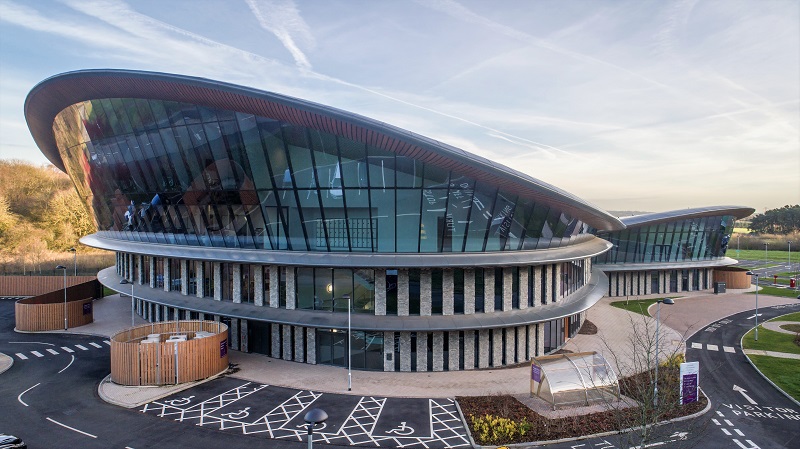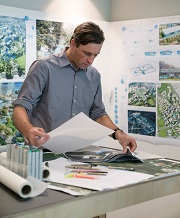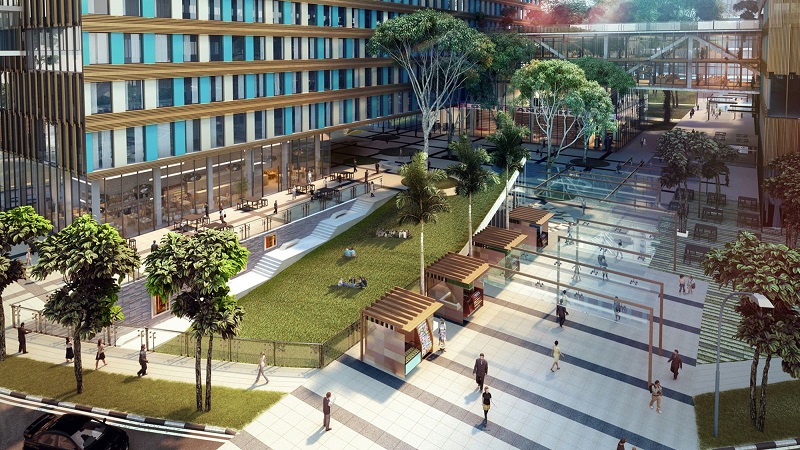The chief executive of a leading children’s health charity is calling on the Government to use its recently-announced capital funding boost to dramatically improve the design of public buildings.
Trudi Beswick is a champion for disabled children and their families; chief executive of the charity, Caudwell Children; a board member of the Design In Mental Health Network; and a steering group member at the British Standards Institution.
And, while welcoming Prime Minister, Boris Johnson’s, announcement last week of ‘the most radical reforms to our planning system since the Second World War’ and his rally to ‘Build Build Build’, she called on the Government and the construction industry to use this opportunity to reconsider exactly who they are building for.
The opportunity to rethink and reset how we work and live may only come around once in a generation, so we must seize the opportunity and ensure that positive change is born from the ashes of such catastrophic disruption and tragedy
She told BBH: “Our understanding of the world has changed and it’s time for our buildings to catch up.
“Across all sectors, all industry, all walks of life, people are questioning what they want to retain from our pre-COVID19 world and what we want to change.
“The opportunity to rethink and reset how we work and live may only come around once in a generation, so we must seize the opportunity and ensure that positive change is born from the ashes of such catastrophic disruption and tragedy.
“Each of us, in whatever field we work, has the ability to reassess what we do and question whether it was really fit for purpose for our modern world.”
And she said that building regulations born from the 1995 and 2005 revisions of the Disability Discrimination Act, where effectively employed, only serve to improve accessibility for people with different mobility and vision needs.
,p> “Our improved understanding of the wider spectrum of accessibility must now be considered, to make our buildings more inclusive and to increase society’s understanding and accepting or all our differences,” Beswick said.Built environments that fail to consider the sensory experience for a neurodiverse population also fail in creating truly-accessible environments for everyone to use and enjoy, a defining principle of accessible design and the hallmark of quality architecture
Particularly overlooked in traditional design approaches, she adds, are the 15% of the UK population who are neurodivergent, meaning that their brains function, learn and process information differently. These include people with attention deficit disorders, autism, dyslexia and dyspraxia.
“These people, along with the wider spectrum of neurological conditions including epilepsy, dementia and Parkinson’s Disease, are not currently considered with existing Building Regulations,” said Beswick.

Stakeholder engagement was placed at the very heart of the decision-making process when designing the CICC
“Hence, the vast majority of buildings and built environments in the UK, and around the world, do not cater for a neurodiverse population.
“Built environments that fail to consider the sensory experience for a neurodiverse population also fail in creating truly-accessible environments for everyone to use and enjoy, a defining principle of accessible design and the hallmark of quality architecture.”
Six years ago Beswick and her team started the design and construction of the Caudwell International Children’s Centre, a 60,000sq ft, purpose-built facility for the provision of support services for disabled children, including autism assessments and interventions.And stakeholder engagement was placed at the very heart of the decision-making process, with the design team routinely seeking direct input from a diverse group of potential users to understand their needs and requirements.
The COVID-19 pandemic, and the pressure it has placed on our ageing and cramped healthcare buildings, has demonstrated how crucial it is to revisit what we provide for future generations – not just in hospitals, but in care homes and hospices too
This process led to the creation of the UK’s first purpose-built, independent facility for the assessment, intervention and research of neurodevelopmental conditions, including autism.

Architect, Ed Baker, described the funding boost as a 'fantastic opportunity to look at how we design and build healthcare facilities in the future'
The completed project, which officially opened in May 2019, has since been recognised for its innovative approach to the design process, winning, among others, the RICS National and Regional Project of the Year award, Design in Mental Health Project of the Year; and the Charity Times Property Innovation Award.
Beswick said: “Recognition for our project should, and will only, be the beginning.
“It is my mission to influence and motivate the wider construction industry to follow examples of best practice within the industry and to adopt the same principles of stakeholder engagement and a broader approach to accessibility.
“Understanding, accepting and embracing all the wonderful diversity within our society will make stronger communities, more-effective businesses, and a healthier society.
“Now is the moment to ensure the legacy of COVID-19 is a legacy for all, a legacy that sets the bar for accessibility around the world.
“I’m asking now for people to join me on this mission and to share this call for support as widely as possible and help spread the word before the walls start going up…and shutting people out.”
If we want a world-leading health system to help drive our civic and economic recovery, we need great facilities in which to deliver this
Her comments come a week after Johnson announced he would revitalise the struggling economy with a £5billion capital funding boost.
The deal includes £1.5billion this year for hospital maintenance, concentrating on eradicating mental health dormitories, enabling hospital building, and improving A&E capacity.
The move, Johnson claimed, would improve patient care, make sure NHS hospitals could deliver world-leading services, and reduce the risk of coronavirus infections.

Ed is an architect at Broadway Malyan, which was behind the design of Health City Novena in Singapore, developed to deliver care during the SARS outbreak in 2013
British urban designer, Ed Baker, of architects, Broadway Malyan, was behind the design of Health City Novena in Singapore, which was built to help deliver care during the SARS outbreak in 2013.
And he described Johnson’s announcement as a ‘fantastic opportunity to look fundamentally at how we design and build facilities that enable a modern approach to health’.
But he told BBH: “The COVID-19 pandemic, and the pressure it has placed on our ageing and cramped healthcare buildings, has demonstrated how crucial it is to revisit what we provide for future generations – not just in hospitals, but in care homes and hospices too.
“The hospitals we have designed overseas show what can be done with integrated investment and planning. <’/p>
“If we want a world-leading health system to help drive our civic and economic recovery, we need great facilities in which to deliver this.”




